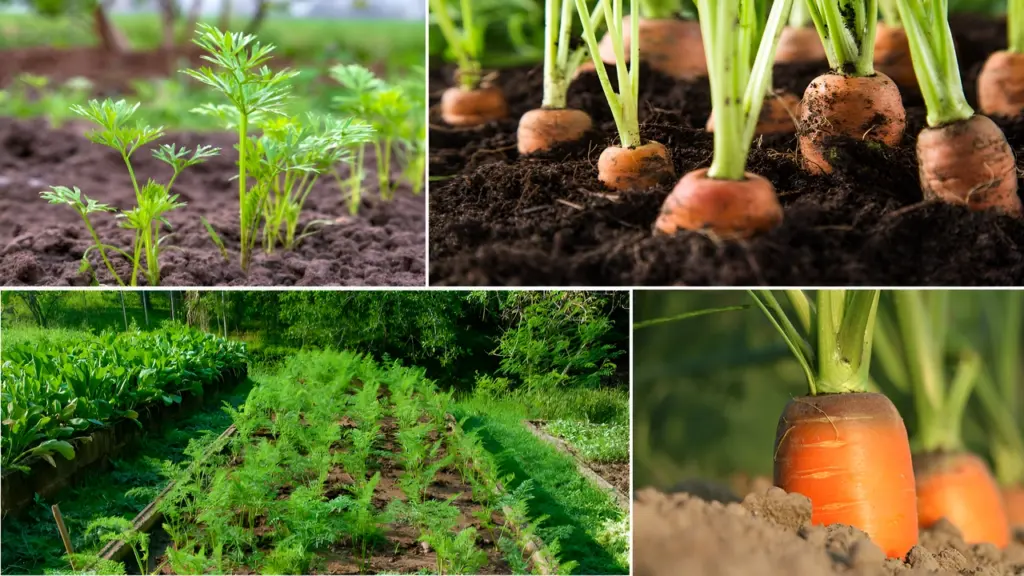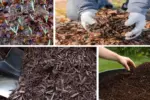Join on WhatsApp
Get the latest updates directly on WhatsApp – motivation, news & more!
Carrots might seem like a crop best left to sprawling vegetable gardens, but they’re actually a perfect fit for small spaces. Whether you have a patio, balcony, or a tiny backyard, growing carrots is not only possible—it’s incredibly rewarding. These crisp, colorful roots require minimal space, and with the right setup, they can thrive in containers, raised beds, or any sunny corner of your outdoor area. This guide walks you through everything from variety selection to harvest, making it easy to grow fresh, homegrown carrots right outside your door.

Picking the Right Carrot Variety
Not all carrots are created equal, and choosing a variety that suits your space is the first key to success. Traditional long-rooted types need deep, loose soil, which might not be ideal for shallow containers or compacted ground. For patios or small raised beds, look for short or round varieties that adapt well to limited depth.
Some great options for smaller spaces include ‘Thumbelina’, a round, golf ball-sized carrot that does well in containers; ‘Paris Market’, a French heirloom with short, stumpy roots; and ‘Nantes’, a sweet, cylindrical variety that grows well in loose soil and smaller plots. If you do have deeper containers or raised beds, you can also try longer types like ‘Danvers’ or ‘Imperator’.
Finding the Right Growing Space
Carrots love sunlight and loose soil. Whether you’re planting in containers, grow bags, or directly in a backyard patch, be sure the area receives at least 6 hours of full sun daily. Shade-tolerant they’re not—insufficient light can lead to thin, leggy greens and stunted roots.
For patio gardening, opt for pots that are at least 12 inches deep. This depth is crucial, especially if you’re growing medium-length or longer carrot types. If your space gets too much wind or sudden cold snaps, place the containers in a more sheltered location, such as next to a wall or under a pergola.
Preparing the Soil
Carrots are one of those crops that really care about what’s under the surface. Their roots need soft, airy, and stone-free soil to grow straight and smooth. Compacted or rocky soil often results in forked, twisted, or stunted roots.
Use a loose, sandy loam mix for best results. For containers, create your own blend using two parts potting soil, one part sand or perlite, and one part compost. Avoid heavy garden soil or any medium with large clumps. Keep the pH slightly acidic to neutral—around 6.0 to 6.8 is ideal.
Avoid using high-nitrogen fertilizers, as these encourage leafy tops at the expense of the roots. A compost-rich, balanced soil mix is usually all you need for healthy growth.
Sowing Carrot Seeds
Carrots are best grown from seed, as they don’t transplant well. Sow the seeds directly into the container or bed where they’ll grow. The seeds are tiny, so handle them carefully, spacing them about half an inch apart and covering lightly with soil—just ¼ inch deep.
Because carrots take time to germinate (usually 1 to 3 weeks), keep the soil consistently moist but not soggy. Dry soil can delay germination or stop it altogether. To retain moisture during the germination period, you can lightly cover the soil with a sheet of cardboard, burlap, or even a damp newspaper—just remember to remove it once you see the first green sprouts.
Watering and Feeding
Carrots like even moisture. Uneven watering can lead to cracked roots or poor development. Aim to keep the soil consistently damp but not waterlogged. Water deeply once or twice a week, depending on your climate, and increase frequency during hot spells.
As for feeding, carrots are not heavy feeders. If you prepared your soil with compost or aged manure, you likely won’t need to fertilize until mid-season. If growth seems slow or the leaves are pale, you can apply a light feeding of a low-nitrogen, potassium-rich fertilizer.
Avoid using fresh manure or high-nitrogen products, as these can cause the roots to split or develop unwanted side roots.
Thinning for Better Growth
Thinning carrot seedlings is one of the most important steps—yet one that many gardeners skip. Once your seedlings reach a few inches tall, thin them to about 2 inches apart. This spacing gives each carrot room to develop a full, healthy root.
You can snip off the extras with scissors at the soil line, or gently pull them out and use the baby greens in salads. It may feel counterintuitive to remove healthy plants, but overcrowding leads to poor, deformed carrots.
Mulching and Maintenance
Mulching helps retain moisture, regulate temperature, and reduce weed growth. Use a light layer of straw, shredded leaves, or grass clippings once your carrots are a few inches tall. Be sure not to bury the seedlings.
Carrots don’t require much maintenance. Just keep the area weed-free, as weeds compete for nutrients and water. Water regularly, and check the soil occasionally for pests like root maggots or cutworms.
Pest and Problem Management
Carrots are relatively low-maintenance, but a few issues can pop up. Carrot rust flies are a common pest in some areas—their larvae feed on the roots and can ruin your crop. To deter them, consider using floating row covers or companion planting with strong-smelling herbs like rosemary or chives.
Another common problem is forked or twisted roots, often caused by poor soil preparation or overcrowding. Taking the time to prepare the right soil mix and thin the seedlings early goes a long way in preventing this.
Slugs may also nibble on young seedlings, especially in moist, shaded areas. Handpicking or using natural deterrents like crushed eggshells around the base of your containers can help keep them at bay.
When and How to Harvest
Depending on the variety, carrots take anywhere from 60 to 80 days to mature. You’ll know they’re ready when the top of the carrot just begins to show above the soil and is about the right width for the variety you planted.
Gently pull a few to check size and flavor. If they’re still small, give them another week or two. To harvest, grip the base of the greens firmly and pull straight up. Loosening the soil around the root with your hand can help avoid breaking the carrot.
After harvesting, brush off excess dirt and store in the refrigerator. If you remove the green tops right away, the carrots will stay fresh longer.
Growing Carrots Without a Garden
You don’t need ground space to grow a solid carrot crop. Deep pots or containers placed on a sunny balcony or patio can yield excellent results. Choose containers at least 12 inches deep, and make sure they have good drainage.
Stacked planter boxes or vertical garden setups with deep pockets are another space-saving option. With proper sunlight and regular watering, you can grow carrots almost anywhere.
Final Thoughts
Growing carrots on your patio or in a backyard bed brings a bit of farm-to-table magic into your everyday life. These crunchy, vibrant roots are easy to grow once you understand their preferences—loose soil, deep containers, consistent moisture, and a little patience. Whether you’re gardening with kids, experimenting on a balcony, or simply craving the flavor of fresh-picked produce, carrots are a satisfying crop that delivers results.
With a little effort and regular care, you’ll soon be pulling sweet, crisp carrots from your very own backyard oasis—no tractor required.




